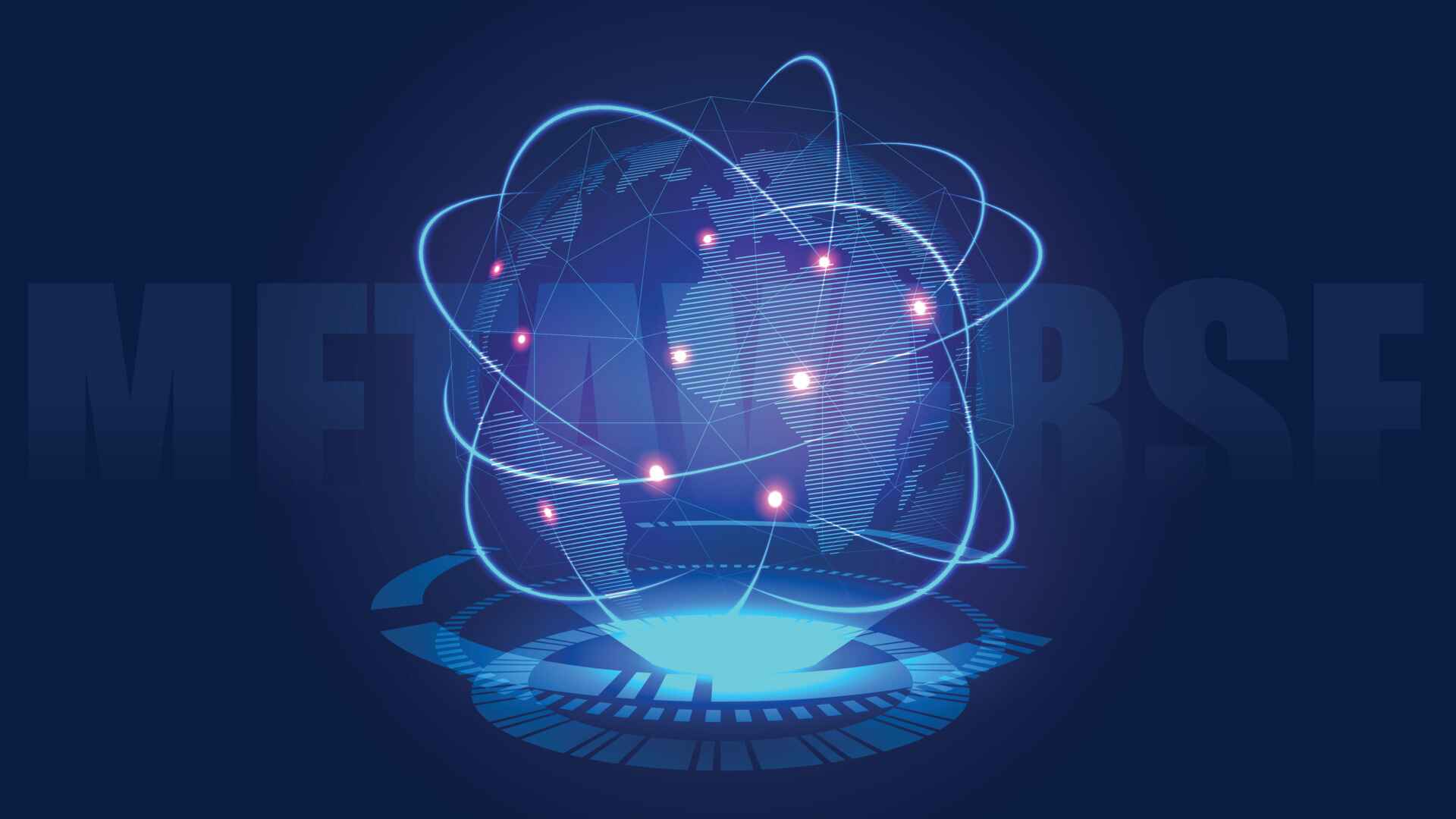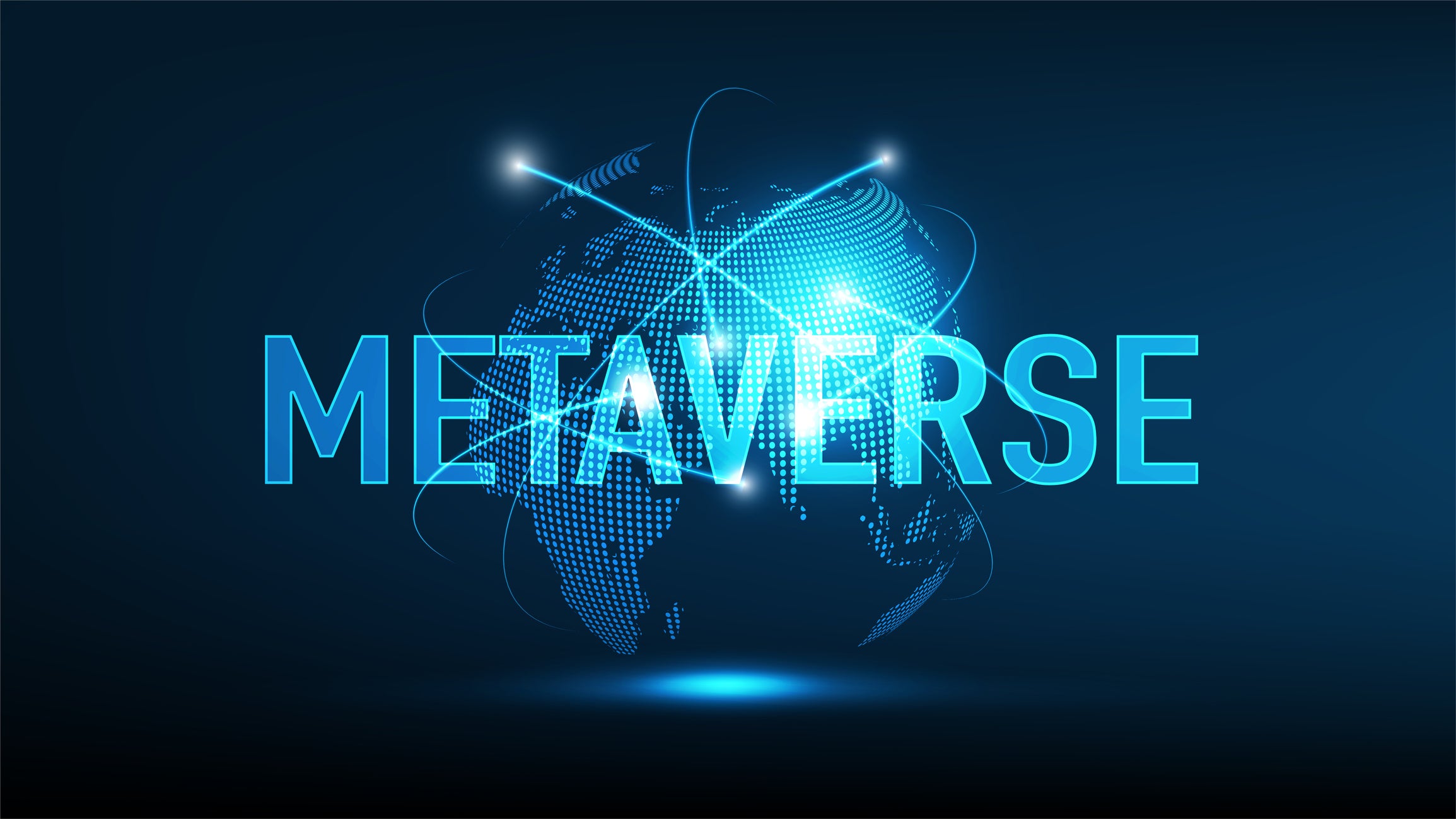Introduction
Welcome to the metaverse, the next frontier of the digital world. In recent years, there has been a growing buzz around the concept of the metaverse, with tech giants and startups alike investing billions of dollars to bring this virtual reality to life. But what exactly is the metaverse, and how can you be a part of building it?
The metaverse is a virtual reality space where users can explore, interact, and create in a three-dimensional world. It goes beyond traditional gaming or virtual reality experiences and aims to create a fully immersive digital universe where people can live, work, and play. Imagine being able to attend virtual events, meet new people, shop at virtual stores, and even hold virtual meetings – all within a vast interconnected network of virtual worlds.
The idea of the metaverse has gained traction thanks to advancements in technology such as virtual reality headsets, high-speed internet connections, and powerful computing capabilities. These developments have paved the way for creating rich and interactive virtual environments that can be experienced by millions of users simultaneously.
Building the metaverse requires a multidisciplinary approach, combining elements of computer science, game development, design, communications, and more. It’s a complex undertaking that requires careful planning, strategic thinking, and a deep understanding of user needs and preferences.
In this article, we will explore the technical requirements, architecture, and infrastructure needed to build a metaverse. We will delve into the creation of virtual worlds, the implementation of social and communication features, the development of avatars and user identity systems, and the integration of artificial intelligence and machine learning.
We will also discuss crucial aspects of securing the metaverse environment and explore various monetization and business models that can sustain and support the development of the metaverse. Additionally, we will address the challenges of scaling and managing such a vast interconnected network.
By the end of this article, you will have a comprehensive understanding of the intricacies involved in building the metaverse and be equipped with the knowledge to embark on your own metaverse development journey.
The Concept of the Metaverse
The concept of the metaverse has its roots in science fiction, often described as a virtual reality version of the internet, where users can interact with a shared digital space. It offers an immersive and interconnected digital experience, transcending the limitations of the physical world.
At its core, the metaverse is a collective virtual reality universe that merges the digital and physical realms, enabling users to navigate and interact with digital environments and other users in real-time. It goes beyond simple online games or social networks, providing a seamless and immersive experience that blurs the boundaries between the real and the virtual.
One of the fundamental aspects of the metaverse is its openness and interconnectivity. Users can seamlessly move between different virtual worlds, with each world representing a unique experience, theme, or purpose. These virtual worlds can be created by individuals, companies, or even entire communities, offering a wide range of activities and opportunities.
Imagine stepping into a virtual world where you can explore ancient civilizations, indulge in fantastical adventures, or attend virtual conferences and concerts. The metaverse allows for infinite possibilities and experiences, limited only by our imagination.
Another critical aspect of the metaverse is its social nature. Just as we interact with others in the physical world, the metaverse enables users to connect and collaborate with people from all over the globe. Whether it’s exploring virtual landscapes together, engaging in virtual commerce, or participating in virtual events, the metaverse brings people together in ways that were once unimaginable.
Furthermore, the metaverse embraces user-generated content and creativity. Users can design and build their virtual environments, objects, and experiences, contributing to the growth and expansion of the metaverse. This democratization of creation empowers individuals and communities to shape the metaverse according to their preferences and ideas, fostering a vibrant and diverse ecosystem.
As the metaverse continues to evolve and develop, it holds the potential to revolutionize various industries. From entertainment and gaming to education, healthcare, and business, the metaverse presents opportunities for innovative and immersive experiences that can reshape how we live and interact in the digital age.
In the next sections, we will explore the technical aspects and requirements needed to turn the concept of the metaverse into a reality. We will examine the architecture, infrastructure, and development processes involved in bringing the metaverse to life.
Understanding the Technical Requirements
Building the metaverse requires a robust and scalable technical infrastructure to support the vast amount of data, interactions, and simulations that will take place within the virtual universe. Understanding these technical requirements is crucial for creating a seamless and immersive metaverse experience.
First and foremost, a high-speed and reliable internet connection is essential. The metaverse relies on real-time interactions and communication between users, virtual objects, and virtual environments. A slow or unstable internet connection would undermine the immersive experience and negatively impact user engagement.
Additionally, powerful computing resources are necessary to render realistic and interactive virtual worlds. These resources include both server-side infrastructure to handle the processing and rendering of virtual environments and client-side hardware capable of running graphics-intensive applications smoothly.
Furthermore, the metaverse requires advanced graphics technologies to create visually stunning and immersive experiences. Realistic lighting, physics simulations, and virtual object interactions are essential for creating a believable and engaging virtual reality. This necessitates the use of cutting-edge graphics engines and technologies to bring these virtual worlds to life.
Beyond the technical aspects, the metaverse also relies on efficient and scalable databases and cloud infrastructure to store and retrieve vast amounts of user data, virtual assets, and user-generated content. Robust data management systems are crucial for ensuring seamless user experiences, efficient content delivery, and scalability as the metaverse grows.
Interoperability is another critical aspect of the metaverse. Different virtual worlds and applications must be able to seamlessly interact and communicate with each other, allowing users to move between and participate in various virtual environments. Standardized protocols and API integrations enable this interoperability and facilitate the seamless transition between different parts of the metaverse.
In terms of user experience, intuitive and user-friendly interfaces are essential for navigating the metaverse. Virtual reality headsets, motion controllers, and other input devices play a significant role in immersing users in the virtual world and enabling them to interact with virtual objects and environments naturally.
Lastly, security and privacy are paramount in the metaverse. Robust security measures need to be in place to protect user data, prevent unauthorized access, and ensure a safe environment for users to interact and engage. Encryption, authentication, and access control mechanisms are necessary to safeguard user information and maintain trust in the metaverse ecosystem.
By understanding and addressing these technical requirements, we can lay the foundation for a seamless and immersive metaverse experience. In the next sections, we will delve into the architecture and infrastructure needed to bring the metaverse to life.
Designing the Metaverse Architecture
Designing the architecture of the metaverse is a crucial step in creating a scalable, interconnected, and immersive virtual reality experience. It involves carefully planning and structuring the underlying systems and components that will power the metaverse and enable its seamless operation.
The metaverse architecture typically involves a combination of central servers, decentralized systems, and peer-to-peer networks. Central servers handle critical tasks such as user authentication, matchmaking, and content distribution. These servers act as the backbone of the metaverse, ensuring smooth and synchronized interactions between users and virtual environments.
Decentralized systems are also integral to the metaverse architecture, especially when it comes to user-generated content and virtual asset ownership. Decentralized storage and blockchain technology can be utilized to ensure the authenticity, immutability, and ownership of virtual assets. This enables users to create, trade, and sell virtual objects and experiences within the metaverse, fostering a dynamic and user-driven economy.
Furthermore, peer-to-peer networks play a significant role in enabling real-time interactions and communication between users within the metaverse. Peer-to-peer networks distribute the processing and bandwidth requirements, reducing the strain on central servers and improving the overall performance and scalability of the metaverse.
Another critical aspect of the metaverse architecture is the integration of spatial computing. Spatial computing technologies process and analyze the physical environment, allowing for the seamless integration of virtual elements and experiences into the real world. This integration opens up possibilities for augmented reality applications and mixed reality experiences within the metaverse.
Moreover, designing the metaverse architecture involves considering the scalability and flexibility of the system. As the metaverse grows and attracts more users, the architecture must be able to accommodate the increased traffic and demands. Scalable cloud infrastructure, load balancing mechanisms, and distributed systems are vital in ensuring a smooth and uninterrupted metaverse experience as user numbers increase.
User experience is also a key consideration in designing the metaverse architecture. The architecture must support a variety of devices and platforms, including virtual reality headsets, desktop computers, and mobile devices. Compatibility and optimization for different hardware configurations and operating systems are necessary to ensure a seamless and immersive experience for all users.
Lastly, security is of utmost importance in the metaverse architecture design. Robust encryption, access controls, and identity management systems are necessary to protect user data and prevent unauthorized access. Additionally, mechanisms to detect and mitigate potential cybersecurity threats within the metaverse ecosystem are critical.
By carefully designing the metaverse architecture, we can create a solid foundation that supports the interconnectedness, scalability, and immersive experiences that define the metaverse. In the next sections, we will explore the practical steps involved in building the base infrastructure for the metaverse.
Building the Base Infrastructure
Building the base infrastructure for the metaverse is a critical step in establishing the foundation upon which virtual worlds and experiences can be created, shared, and accessed by users. This infrastructure encompasses the necessary hardware, software, and networking components required to support the metaverse ecosystem.
One of the primary components of the base infrastructure is the server infrastructure. Powerful servers are needed to host and manage the vast amount of data, including virtual worlds, user profiles, assets, and interactions within the metaverse. These servers provide the computational and storage resources required for rendering and handling user interactions in real-time.
In addition to server infrastructure, a robust networking infrastructure is essential to facilitate seamless communication and interactions between users and virtual environments. Fast and reliable internet connections ensure low latency and high bandwidth, enabling users to navigate the metaverse without interruptions or delays.
Cloud infrastructure plays a pivotal role in providing scalable and flexible resources for the metaverse. Cloud services can be utilized to dynamically allocate computing power, storage, and bandwidth as needed, allowing the metaverse to scale to accommodate increasing user demands.
Moreover, content delivery networks (CDNs) are instrumental in ensuring efficient and fast content distribution within the metaverse. CDNs cache and serve static and dynamic content across distributed edge servers, reducing latency and improving the user experience by delivering content from locations closer to the user’s geographic location.
Alongside the infrastructure components, software frameworks and development tools are crucial for building and managing the metaverse. These tools provide developers with the necessary resources to create virtual worlds, implement user interactions, and manage the metaverse ecosystem. Software frameworks, such as gaming engines and virtual reality development kits, enable developers to create immersive and interactive experiences within the metaverse.
When building the base infrastructure, it is essential to consider scalability and redundancy. As the metaverse grows and attracts more users, the infrastructure should be able to handle the increased traffic and demands without compromising performance. Redundancy, through backup systems and failover mechanisms, ensures that the metaverse remains accessible and operational even in the event of hardware or network failures.
Lastly, cybersecurity should be a top priority when building the base infrastructure. Robust security measures, such as firewalls, intrusion detection systems, and encryption protocols, must be implemented to protect user data, ensure privacy, and prevent unauthorized access to the metaverse ecosystem.
By establishing a solid base infrastructure, we lay the foundation for a reliable, scalable, and secure metaverse. With the infrastructure in place, we can move on to the exciting phase of creating virtual worlds within the metaverse, which we will explore in the next section.
Creating Virtual Worlds
Creating virtual worlds is at the heart of the metaverse experience. These digital realms serve as the canvas on which users can explore, interact, and immerse themselves in a vast array of experiences. Designing and building virtual worlds requires a combination of artistic creativity, technical skills, and user-centric design principles.
The process begins with conceptualizing the virtual world. This involves defining the theme, setting, and purpose of the virtual world. Whether it’s a futuristic cityscape, an enchanting fantasy realm, or a realistic simulation of a historical location, the virtual world should captivate and engage users with its unique characteristics and aesthetics.
Next, the virtual world architecture is designed. This includes the arrangement of objects, structures, and landscapes within the virtual space. Attention to detail is crucial to create a realistic and coherent environment that users can navigate and explore seamlessly. Elements like terrain, buildings, vegetation, and water bodies are meticulously crafted and placed in the virtual world.
Once the architecture is in place, the virtual world is populated with interactive objects and elements. These can include items such as furniture, vehicles, NPC (non-player character) avatars, and interactive elements like doors, levers, or puzzles. The interactivity of objects adds depth and engagement to the virtual world, allowing users to interact with their surroundings and shape the environment.
Furthermore, virtual worlds can benefit from dynamic systems and simulations. For example, weather effects, day-night cycles, or physics-based interactions can enhance realism and create a more immersive experience for users. Simulating realistic and believable behaviors within the virtual world adds depth and richness to the experience and makes it feel more alive.
Designers and developers also need to consider the scalability of virtual worlds. As the metaverse attracts more users and virtual worlds increase in complexity, the infrastructure must be able to handle the growing demands. Proper optimization techniques, level streaming, and well-designed resource management systems ensure that virtual worlds perform optimally and can accommodate a large number of simultaneous users.
Additionally, user-generated content is a key aspect of virtual world creation within the metaverse. Allowing users to contribute their creations, such as buildings, objects, or even entire virtual worlds, fosters a sense of ownership and creativity. User-generated content empowers individuals and communities to shape the metaverse and adds a diverse range of experiences for users to explore and enjoy.
Collaborative creation and sharing tools also play a significant role in virtual world creation. These tools enable multiple creators to work together, share assets, and collaborate in real-time, facilitating the development of complex and highly detailed virtual worlds. Accessibility and ease of use of these creation tools are essential to encourage participation and contribute to the growth of the metaverse.
By carefully designing and building virtual worlds, we can create captivating and immersive experiences within the metaverse. In the next section, we will explore the implementation of social and communication features, which are integral to the interconnected nature of the metaverse.
Implementing Social and Communication Features
A crucial aspect of the metaverse is the ability for users to connect, communicate, and collaborate with each other. Implementing social and communication features within the metaverse creates a vibrant and interactive community of users, fostering engagement, creativity, and socialization.
One of the key elements in enabling social interactions within the metaverse is the implementation of avatars. Avatars are digital representations of users that allow them to navigate and interact with the virtual worlds and other users. Avatars can be customized, allowing users to express their personality and individuality within the metaverse. Implementing a robust avatar system with a wide range of customization options enhances user identity and engagement.
Communication features are essential in facilitating interactions between users. Real-time voice and text chat systems enable users to communicate within the metaverse, fostering collaboration and socialization. These features can be integrated directly into the virtual world environment, enabling users to talk, meet, and coordinate activities with others seamlessly.
Building on the communication features, social networking elements can be incorporated into the metaverse to enhance community engagement. Features such as friend lists, profiles, and status updates allow users to connect with friends, join groups, and share experiences. This creates a sense of belonging and encourages social interaction within the metaverse.
Furthermore, the metaverse can facilitate virtual events and gatherings, providing opportunities for users to come together for concerts, conferences, exhibitions, and more. This helps create a vibrant and dynamic virtual community, bridging the gap between physical and virtual spaces.
Implementing social and communication features also involves providing tools for user collaboration and content sharing. Users can form teams, join projects, and share their creations, fostering a collaborative and creative environment within the metaverse. Features such as shared virtual whiteboards, document storage and sharing, and real-time collaboration tools enable users to work together in virtual space as if they were in the same physical location.
Inclusivity is another important consideration when implementing social and communication features. Providing accessibility options, such as closed captions or screen reader compatibility, ensures that users with different abilities can fully participate and engage within the metaverse community.
Privacy and moderation are vital aspects of social and communication features in the metaverse. Implementing robust privacy settings gives users control over their personal information and interactions. Moderation systems and guidelines help maintain a safe and respectful environment, preventing harassment, abuse, and inappropriate behavior within the metaverse ecosystem.
By implementing social and communication features, we create a social fabric within the metaverse that fosters engagement, collaboration, and a sense of belonging. In the next section, we will explore the development of avatars and user identity systems, which play a crucial role in personalizing the metaverse experience.
Developing Avatars and User Identity Systems
Avatars and user identity systems are integral components of the metaverse, as they provide users with a means to personalize and express themselves within the virtual space. Developing robust avatar systems and user identity systems allows for enhanced user engagement, immersion, and social interaction within the metaverse.
One of the key aspects of developing avatars is offering a wide range of customization options. Users should have the ability to modify their avatar’s appearance, including features such as hairstyle, facial features, body shape, and clothing. By providing a diverse set of customization choices, users can create avatars that represent their individuality and reflect their desired virtual persona.
Advanced avatar systems also allow for customization beyond visual aspects. Implementing dynamic animations and gestures adds another layer of expression and personality to the avatars. Users should be able to choose from a variety of emotions, movements, and actions to make their avatars feel more lifelike and engaging.
User identity systems within the metaverse should be designed with privacy and security in mind. Implementing secure authentication mechanisms, such as two-factor authentication, ensures that user accounts are protected from unauthorized access. Additionally, users should have control over their personal information and be able to customize their privacy settings to decide what information is shared with other users.
Developing user identity systems also involves linking users’ real-world identities to their virtual personas. This optional feature allows for a more seamless integration between the physical and virtual worlds. Users can choose to connect their social media profiles or use their real names, while still maintaining privacy if desired. This enhances trust and fosters a sense of authenticity and accountability within the metaverse community.
Furthermore, user identity systems can facilitate the creation of virtual economies within the metaverse. Users can own and trade virtual assets, sell or rent virtual properties, and engage in virtual commerce. Implementing secure and transparent transactions and ownership systems ensures the fairness and trustworthiness of these virtual economies.
User-friendly interfaces and intuitive avatar customization tools are important considerations in the development of avatar and user identity systems. The tools should be accessible to users of all skill levels, allowing them to easily create and modify their avatars and manage their user profiles. This accessibility encourages engagement and participation from users with varying levels of technical expertise.
Lastly, interoperability of avatars and user identity systems is essential within the metaverse. Users should be able to use their avatars and user profile across different virtual worlds and applications, allowing for seamless transition and interaction between different parts of the metaverse. Standardized protocols and APIs enable this interoperability, making it easier for developers to integrate avatars and user identity systems into their virtual experiences.
By developing avatars and user identity systems, we empower users to personalize their metaverse experience, express their individuality, and engage in social interactions within the virtual space. In the next section, we will explore the integration of artificial intelligence and machine learning within the metaverse, enhancing the intelligence and responsiveness of virtual environments and experiences.
Integrating Artificial Intelligence and Machine Learning
The integration of artificial intelligence (AI) and machine learning (ML) within the metaverse adds a layer of intelligence and responsiveness to virtual environments and experiences. These technologies enable virtual worlds to adapt, learn, and interact with users in more sophisticated and immersive ways.
One of the primary applications of AI and ML in the metaverse is intelligent NPCs (non-player characters). NPCs with AI capabilities can exhibit realistic behaviors, make autonomous decisions, and engage in meaningful interactions with users. These virtual characters can respond to user actions, hold conversations, and provide guidance or challenges within the virtual world. Implementing AI-based NPCs creates more dynamic and engaging experiences for users.
Machine learning algorithms can be used to generate and populate virtual worlds with content. By analyzing user preferences, behaviors, and interactions, ML models can generate personalized content recommendations, suggesting virtual worlds, activities, or items that align with users’ interests. This personalized content delivery enhances user engagement and satisfaction within the metaverse.
Furthermore, chatbots powered by AI can be integrated into the metaverse to provide virtual assistants and customer support. These chatbots can answer user questions, provide guidance, and assist in navigating the virtual environment. Natural language processing algorithms enable chatbots to understand and respond to user queries in a conversational manner, adding a realistic and interactive element to user interactions.
Integrating AI and ML also allows for intelligent automation within the metaverse. Virtual environments can adapt and respond to user behaviors and preferences. For example, virtual worlds can dynamically adjust difficulty levels or generate personalized challenges based on user performance. This adaptive behavior creates a tailored and engaging experience for each user.
Machine learning techniques can also be employed to enhance the visual and audio aspects of the metaverse. AI algorithms can analyze and generate realistic textures, lighting effects, and soundscapes, immersing users in more immersive and believable virtual environments. These advancements in AI-generated visuals and audio contribute to the overall realism and quality of the metaverse experience.
In addition to enhancing user experiences, AI and ML can assist in content moderation and safety within the metaverse. AI algorithms can analyze and detect inappropriate content, hate speech, or behavior that violates community guidelines. This automated moderation helps create a safe and inclusive environment for users to interact and engage.
Integrating AI and ML within the metaverse requires robust data management systems and infrastructure. Large volumes of user and interaction data are processed and analyzed to generate personalized experiences and intelligent behaviors. Secure and scalable data storage and processing systems are necessary to handle the complexity and scale of data within the metaverse.
Lastly, it is important to consider ethical implications when integrating AI and ML in the metaverse. Ensuring transparency, fairness, and accountability in AI-powered systems is crucial to maintain user trust. Implementing ethical guidelines and practices helps address potential biases, protect user privacy, and foster responsible use of AI technology within the metaverse ecosystem.
By integrating AI and ML, we enhance the intelligence, adaptability, and realism of the metaverse, enriching the overall user experience. In the next section, we will explore the importance of securing the metaverse environment, safeguarding user data, and preventing unauthorized access.
Securing the Metaverse Environment
As the metaverse becomes an increasingly interconnected and immersive digital space, ensuring the security of the environment and protecting user data are paramount. Implementing robust security measures safeguards user privacy, prevents unauthorized access, and fosters a safe and trustworthy metaverse ecosystem.
One of the key security considerations in the metaverse is user authentication and access control. Implementing secure authentication mechanisms, such as multi-factor authentication, helps validate the identity of users and prevents unauthorized access to user accounts. Strong password policies and encryption protocols also play a crucial role in protecting user credentials.
Data privacy is another critical aspect of metaverse security. Implementing privacy controls allows users to customize the level of information they share within the metaverse. Users should have the ability to manage and control their personal data, including profile information, preferences, and communication logs. Adhering to data protection regulations, such as GDPR (General Data Protection Regulation), ensures that user data is handled responsibly and transparently.
Secure communications within the metaverse are essential to protect sensitive information and prevent eavesdropping. Implementing encryption protocols ensures that user interactions and conversations remain private and confidential. Secure messaging systems and voice over IP (VoIP) communications with end-to-end encryption enhance the privacy and security of user conversations within the metaverse.
Protection against cybersecurity threats, such as hacking attempts and malicious activities, is vital in the metaverse environment. Implementing intrusion detection and prevention systems helps identify and block potential threats in real-time. Regular security audits and vulnerability assessments ensure that the metaverse infrastructure and applications remain secure and up to date.
Securing virtual economies within the metaverse is crucial to protect user assets and transactions. Implementing blockchain technology and smart contracts enables secure and transparent ownership, trading, and transactional capabilities within the virtual economy. Ensuring the integrity and authenticity of virtual assets prevents fraud and enhances user trust.
User safety and community guidelines also play an important role in metaverse security. Establishing clear guidelines and policies for user behavior, community interactions, and content moderation helps create a safe and inclusive environment within the metaverse. Implementing reporting systems and moderation tools allows users to flag and address inappropriate or harmful content or behavior.
Regular security updates and patches are essential in maintaining a secure metaverse environment. Timely software updates address vulnerabilities and patch security gaps, ensuring that the metaverse remains resilient against emerging threats. Continuous monitoring and response systems help detect and mitigate security incidents promptly.
Collaboration among stakeholders is crucial in addressing metaverse security. Developers, users, and administrators need to work together to identify risks, share knowledge, and implement best security practices. Public-private partnerships can also play a role in establishing security standards, frameworks, and certifications for the metaverse ecosystem.
By prioritizing security measures and implementing robust protocols, the metaverse can foster a secure, trusted, and safe environment for users to explore, create, and interact. In the next section, we will explore the various monetization and business models that can support the development and sustainability of the metaverse.
Monetization and Business Models
Monetization and business models are crucial for the development, growth, and sustainability of the metaverse. As the metaverse evolves into a fully immersive and interconnected digital space, various monetization strategies and business models can be implemented to support the creation and maintenance of virtual worlds, infrastructure, and experiences.
One of the primary monetization models in the metaverse is virtual commerce. This involves the creation, sale, and trade of virtual goods, assets, and services within the virtual environment. Users can purchase virtual items, clothing, accessories, and even virtual real estate. Limited edition items, customization options, and unique experiences can generate revenue and drive user engagement within the metaverse.
Virtual advertising is another avenue for monetization within the metaverse. Brands can advertise within virtual environments and events, reaching a highly engaged and targeted audience. Virtual billboards, sponsored in-game items, and branded experiences provide opportunities for brands to connect with users and generate revenue through partnerships and advertising placements.
Subscription-based models can also be implemented in the metaverse. Users can subscribe to premium services or gain access to exclusive content and features for a recurring fee. Subscriptions can provide users with enhanced customization options, priority access to events, and premium support, offering additional value and incentives to subscribers.
Freemium models are prevalent in the metaverse, where basic access to the virtual environment is free, but users can choose to purchase additional premium features or content. This model allows users to explore the metaverse at no cost, while offering opportunities to monetize through in-app purchases, upgrades, or access to exclusive content.
Virtual events and experiences can be monetized through ticket sales or participation fees. Users can attend virtual concerts, conferences, or workshops and pay for access to these exclusive experiences. By providing unique and immersive events, organizers can generate revenue while offering memorable virtual experiences to participants.
Partnerships and collaborations with brands, content creators, and influencers can also drive monetization in the metaverse. Brands can sponsor virtual environments, collaborate with content creators for branded experiences, or launch virtual campaigns and challenges. These partnerships create mutually beneficial opportunities for exposure, revenue generation, and increased user engagement.
Another potential revenue stream in the metaverse is licensing and intellectual property (IP) monetization. Virtual worlds, characters, and assets can be licensed to other developers or within the metaverse ecosystem. IP holders can generate revenue by allowing others to use and develop virtual creations or by granting rights to use their IP within specific virtual environments.
Finally, premium services and consulting can be offered within the metaverse. Companies and developers can provide tailored experiences, customized virtual worlds, or consulting services to users or organizations seeking to enhance their presence and engagement in the metaverse. These services can range from avatar customization to creating personalized virtual events or virtual reality training simulations.
By implementing innovative and diverse monetization and business models, the metaverse can generate revenue and support the growth and sustainability of virtual environments, infrastructure, and experiences. In the final section, we will explore the challenges of scaling and managing the metaverse as it continues to expand and evolve.
Scaling and Managing the Metaverse
As the metaverse continues to grow in popularity and user participation, scaling and effective management become crucial. Scaling the metaverse involves accommodating a larger user base, expanding infrastructure capabilities, and ensuring a seamless experience for users, while proper management entails overseeing operations, community engagement, and content moderation.
Scaling the metaverse infrastructure requires careful planning and investment in robust and scalable technologies. This includes expanding server capacities, networking infrastructure, and storage systems to handle the increasing load and demands. Load balancing mechanisms distribute user traffic efficiently, preventing bottlenecks and ensuring a smooth user experience even during peak usage periods.
Cloud computing solutions play a significant role in scaling the metaverse. By utilizing cloud infrastructure, computing resources can be dynamically allocated based on demand, optimizing performance and cost efficiency. Scalable cloud services also enable developers to flexibly deploy and manage virtual worlds, taking advantage of elastic resources and scaling up or down as needed.
Managing the metaverse involves community engagement and content moderation to ensure a safe and inclusive environment. Building and fostering a vibrant community requires active communication, providing updates, and soliciting feedback from users. Community managers can facilitate discussions, resolve conflicts, and encourage collaboration, fostering a positive and interactive metaverse community.
Content moderation is crucial to maintaining appropriate and respectful interactions within the metaverse. Implementing moderation tools, guidelines, and reporting mechanisms helps identify and address inappropriate or harmful behavior or content. Collaboration between community managers, developers, and users is essential for continuously improving content moderation and enforcing community guidelines.
Developing effective governance and policies is another aspect of metaverse management. Establishing rules and policies for content creation, ownership, and behavior within the metaverse ensures a fair and consistent experience for all users. A transparent and well-defined governance structure helps maintain trust, resolve disputes, and address issues that arise in the metaverse ecosystem.
Metadata and search capabilities are crucial for managing the metaverse effectively. Creating a robust metadata system allows users to discover and navigate virtual worlds, events, and experiences based on their interests. Advanced search functionalities enable users to find relevant content and facilitate interactions within the metaverse ecosystem.
Scalability and management also involve continuous improvement and innovation. Staying ahead of technological advancements and user demands requires ongoing research, development, and experimentation. Regular updates and enhancements to the metaverse ecosystem keep it fresh, engaging, and capable of adapting to the evolving needs and expectations of users.
Collaboration and partnerships across the metaverse ecosystem are instrumental in scaling and managing the metaverse. Developers, platform owners, content creators, and users need to work together to address challenges, share insights, and drive innovation. Public-private partnerships can also play a role in establishing industry standards, best practices, and regulatory frameworks to ensure the responsible growth and management of the metaverse.
By effectively scaling and managing the metaverse, we can create a thriving and sustainable digital universe where users can explore, connect, and realize their creative visions. With proper planning, infrastructure, and management strategies, the metaverse can continue to expand and evolve, offering new and exciting possibilities for users around the world.

























